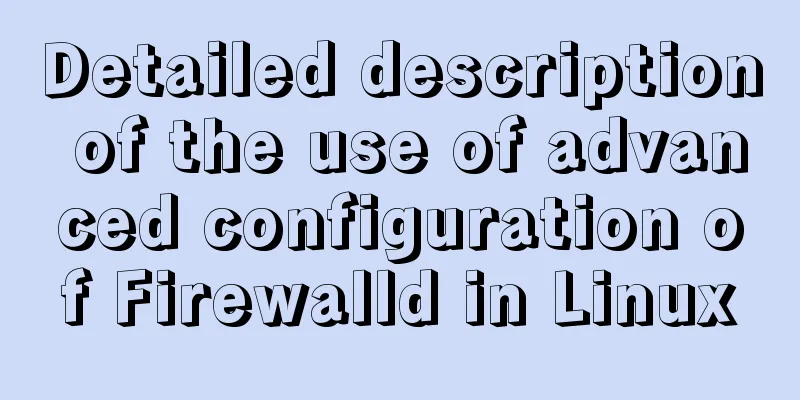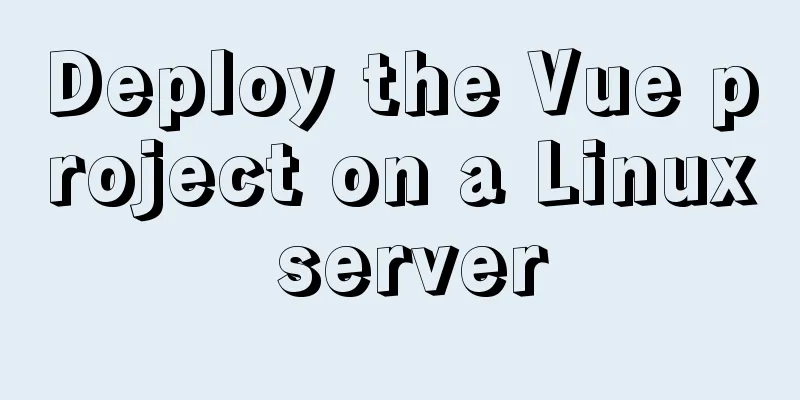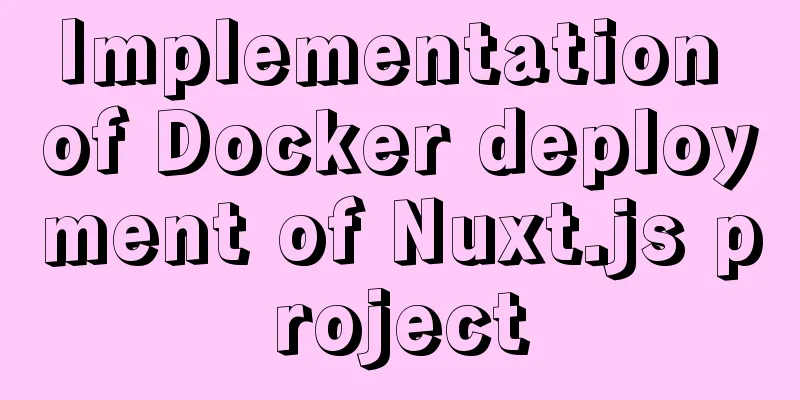Detailed description of the use of advanced configuration of Firewalld in Linux

|
IP masquerading and port forwarding Firewalld supports two types of network address translation IP address masquerade
Port forwarding (Forward-port)
Address masquerade configuration Add address masquerading function for specified areas firewall-cmd [--permanent] [--zone= zone] --add-masquerade [--timeout seconds] //--timeout=seconds: Automatically delete this function after a period of time Remove address masquerading for a specified area firewall-cmd [--permanent] [--zone= zone] --remove-masquerade Check whether the address masquerading function is enabled in the specified area firewall-cmd [--permanent] [--zone=zone] --query-masquerade Port forwarding configuration List port forwarding configuration firewall-cmd [--permanent] [--zone=zone] --list-forward-ports Adding port forwarding rules firewall-cmd [--permanent] [--zone=zone] --add-forward-port=port=portid[-portid]:proto=protocol[:toport-portid[-portid]][:toaddr-address[/mask]][--timeout=seconds] Deleting a port forwarding rule firewall-cmd [--permanent] [--zone=zone] --remove-forward-port=port=portid[-portid]:proto=protocol[:toport=portid[-portid]][:toaddr=address[/mask]] Query port forwarding rules firewall-cmd [--permanent] [--zone=zone] --query-forward-port-port-portid[-portid]:proto=protocol[:toport-portid[-portid]][:toaddr=address[/mask]] Firewalld direct rules Direct interface
Custom rule chains Firewalld automatically creates custom rule chains for zones where rules are configured
Allow inbound traffic to TCP/9000 port irewall-cmd --direct --add-rule ipv4 filter IN work_ allow 0 -p tcp --dport 9000 j ACCEPT
Query all direct rules firewall-cmd --direct --get-all-rules ipv4 filter IN_ work _allow 0 -p tcp --dport 9000 -j ACCEPT You can add the --permanent option to view the permanent configuration Firewalld rich language rules Rich language Expressive configuration language, no need to understand iptables syntax Used to express basic allow/deny rules, configure logging (for syslog and auditd), port forwarding, masquerading, and rate limiting rule [family="<rule family>"] [ source address="<address>" [invert "True"] ] [ destination address="<address>" [invert="True"] ] [ <element> ] [ log [prefix="<prefix text>"] [level="<log level>"] [limit value="rate/duration"] ] [ audit ] [ acceptlrejectldrop ] Understanding Rich Language Rules Commands Common options for firewall-cmd to process rich language rules
Configured rich language rule display mode firewall-cmd --list-all firewall-cmd --list-all-zones --list-rich-rules Rich language rules concrete grammar source, destination, element, service, port, protocol, icmp-block, masquerade, forward-port, log, audit, accept, reject, drop Deny all traffic from 192.168.8.101 firewall-cmd --permanent --zone=work --add-rich-rule='rule family=ipv4 source address=192.168.8.101/32 reject' When the ddress option is used with source or destination, family= ipv4 | ipv6 must be used. Accept TCP traffic from 192.168.1.0/24 subnet ports 8000-9000 firewall-cmd --permanent --one=work --add-rich-rule='rule family=ipv4 source address=192.168.1.0/24 port port=8000-9000 protocol=tcp accept' Drop all icmp packets firewall-cmd --permanent --add-rich-rule='rule protocol value=icmp drop' Accept http traffic from 192.168.8.1 and record the log firewall-cmd --add-rich-rule='rule family=ipv4 source address=192.168.8.1/32 service name="http" log level=notice prefix= "NEW HTTP" limit value "3/s" accept' Access http at 192.168.8.1 and observe /var/log/messages Apr 16 17:09:55 Server kernel: NEW HTTP IN=ens33 OUT= MAC=00:0c:29:69:01:c4:00:50:56:c0:00:08:08:00 SRC=192.168.8.1 DST=192.168.8.131 LEN=52 TOS=0xOO PREC=0x00 TTL =64 ID=20582 DF PROTO=TCP SPT=65289 DPT=80 WINDOW=8192 RES=0x00 SYN URGP=0 Apr 16 17:09:55 Server kernel: NEW HTTP IN=ens33 OUT= MAC=00:0c:29:69:01:c4:00:50:56:c0:00:08:08:00 SRC=192.168.8.1 DST=192.168.8.131 LEN=52 TOS=0x0O PREC=0x0O TTL =64 ID=20590 DF PROTO=TCP SPT=65291 DPT=80 WINDOW=8192 RES=0x00 SYN URGP=0 Apr 16 17:09:55 Server kernel: NEW HTTP IN=ens33 OUT= MAC=00:0c:29:69:01:c4:00:50:56:c0:00:08:08:00 SRC=192.168.8.1 DST=192.168.8.131 LEN=52 TOS=0x0O PREC=0x0O TTL =64 ID=20602 DF PROTO=TCP SPT=65292 DPT=80 WINDOW=8192 RES=0x00 SYN URGP=0 The above is the full content of this article. I hope it will be helpful for everyone’s study. I also hope that everyone will support 123WORDPRESS.COM. You may also be interested in:
|
<<: MySQL 5.6 root password modification tutorial
>>: Detailed explanation of how to use CMD command to operate MySql database
Recommend
Analysis of the Poor Performance Caused by Large Offset of LIMIT in MySQL Query
Preface We all know that MySQL query uses the sel...
How to add automatic completion commands for docker and kubectl on Mac
Introduction to kubectl kubectl is a command line...
Practical example of Vue virtual list
Table of contents Preface design accomplish summa...
Detailed explanation of Vue's monitoring properties
Table of contents Vue monitor properties What is ...
Implementation of CSS border length control function
In the past, when I needed the border length to b...
How to check whether the ports of the local computer and the remote server are connected under Linux
As shown below: 1. ssh -v -p [port number] [user ...
In-depth understanding of the vertical-align property and baseline issues in CSS
vertical-align attribute is mainly used to change...
Navicat connection MySQL error description analysis
Table of contents environment Virtual Machine Ver...
Detailed explanation of custom swiper component in JavaScript
Table of contents Effect display Component Settin...
How to view MySQL links and kill abnormal links
Preface: During database operation and maintenanc...
How to install JDK8 on Windows
1. Download: http://www.oracle.com/technetwork/ja...
How to fix some content in a fixed position when scrolling HTML page
This article mainly introduces how some content i...
HTML pop-up div is very useful to realize mobile centering
Copy code The code is as follows: <!DOCTYPE ht...
Install and configure MySQL under Linux
System: Ubuntu 16.04LTS 1\Download mysql-5.7.18-l...
Detailed explanation of direct routing in cross-host communication of Docker containers
Overview As for the current default network of Do...









